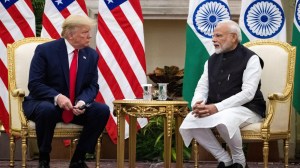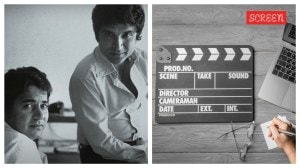Reasons for Irrationality
Daniel Kahneman expertly chips away at our delusions about our rationality
At a recent conference,the economist Sendhil Mullainathan played a trick on the visitors. As newcomers signed in,the student manning the registration table would duck down to procure a file. In his or her place,another student would emerge with the file. The two students were of the same gender and race,but otherwise bore little resemblance to each other. Yet,in a majority of cases,despite having conversed with both students,the visitor did not notice the switch.
Though such mistakes are commonplace,traditional economics has few tools to make sense of individuals who are less than perfectly attentive and rational. Only in recent decades has the field of behavioural economics emerged to address such human foibles. And it is fitting that one of the founding fathers of this field is not an economist,but the psychologist Daniel Kahneman.
In Thinking,Fast and Slow,Kahneman introduces the non-specialist reader to his research,some of which earned him the Nobel Prize in economics. It is a fascinating book that describes both the ideas and his intellectual development. We read about his days as a graduate student in psychology and his subsequent astonishment at the naivete of economic assumptions. And we relive his long walks in Jerusalem and Oregon with his collaborator Amos Tversky,which would culminate in one of the most important papers written in economics.
The book highlights many biases of intuition. Contrary to the assumptions of orthodox economic theory,individuals make two kinds of mistakes their perceptions are flawed,and their choices are not consistent with their purported objectives. Kahneman demonstrates that many mistakes are systematic and predictable,and should,therefore,be incorporated into the theory of the economic agent.
He describes the decision-making process as a combined effort of two systems in the brain. System 1 is designed to be intuitive and instinctive,and System 2 is designed to be deliberative. While System 1 has many advantages,including the fact that it allows us to make decisions without taxing our limited resources,it is also prone to jumping to incorrect conclusions.
When does the intuition of System 1 lead us astray? Kahneman provides several examples,many involving the properties of statistics. First,we fail to realise how unrepresentative small samples are. For a sample to reliably inform us about the population at large,it needs to be big and selected randomly. This is a fact that we are intellectually aware of,yet ignore when forming our perceptions about the world. How many of us have read annual sex surveys and not felt despair? From their samples,it would appear that Delhi is not a city but an orgy,and somehow the reader has been left out of the fun.
Second,we are susceptible to anchoring,or being influenced by irrelevant numbers. Kahneman describes a supermarket experiment where cans of soup were put on sale. On some days,buyers were informed that they were allowed to buy no more than 12 cans; on other days,there was no limit. Bizarrely,the number of cans bought under the limit was double the number bought when the limit was lifted. The 12-can quota created an anchor that drove purchases up. This is a frightening revelation though we may be convinced that a limit will not make us buy more,in fact it does. Third,Kahneman reminds us that 90% of drivers believe they are better than average. But,and this is one of the strengths of the book,he does not stop at such an observation. Instead,he digs deeper to ask how overconfidence emerges,and considers mistakes of perception as well as social and economic pressures.
Beyond these and other biases of intuition,the book covers several topics,including decision-making under risk. Consider the choice between a salaried job and entrepreneurship. One comes with stability; the other could lead to fortune or penury. Traditionally,economics has used an approach called Expected Utility (EU) theory to describe how a rational individual evaluates such choices.In 1979,Kahneman and Tversky published a paper entitled Prospect Theory: An Analysis of Decision Under Risk. In the world of economics,it was a major event,like Kim Kardashians marriage (but longer lasting). The paper argued that although EU was an elegant depiction of rationality,it simply did not describe human behaviour. Under EU,only outcomes matter (not whether you arrived there through gains or losses). So,if I win a lottery and end up with a crore,and if Mukesh Ambani makes a bad investment and is left with a crore,we should both be equally happy after all,our outcomes are the same. Clearly,this is unreasonable.
Prospect Theory incorporated reference points into the model. Kahneman and Tversky showed that a robust theory could be built around this psychological observation happiness depends not only on where you end up,but also where you began. This has helped economists better explain phenomena in areas as diverse as stock purchases and restaurant choices. By chipping away at the traditional models of economics,Kahneman also chips away at our delusions of our own rationality. Occasionally,the book drifts dangerously close to self-help territory when he advises the reader on how to avoid biases. But,thankfully,Kahneman is more interested in explaining than reforming,and the book corrects course soon enough.
Thinking,Fast and Slow provides readers with the tools to rigorously and sceptically analyse the psychology of decision-making. And there remain many puzzles awaiting resolution. Consider the case of the statistician twins. In the early 1990s,at our annual fair in Mayur Vihar,my friends and I had set up an Under-Over-Lucky-Seven table. In this game,you bet on the outcome of a roll of two dice. If you bet on under seven or over seven and win,your money is doubled. If you bet on seven and win,your money is trebled.
Two brothers,twins in fact,in their twenties showed up to play several rounds,each time placing identical bets on both under and over. These bets made no sense they would either break even,or,if the dice rolled seven,lose everything. When we tentatively explained that theirs was a no-win strategy,they laughed patronisingly and said,We are students of statistics. In time,thanks to the foundation laid by Daniel Kahneman,behavioral economics might provide us with a psychological explanation for their flawed bets. Until then,I remain grateful to the statistician twins for the many plates of chowmein they inadvertently funded.





- 01
- 02
- 03
- 04
- 05


























